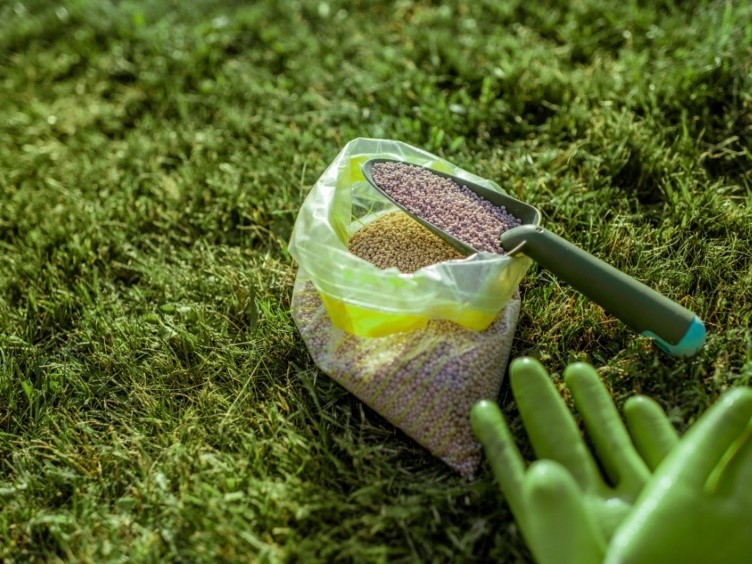Description


Disclaimer: Copyright infringement not intended.
Context
- The upcoming government is expected to prioritize balanced fertilization to discourage excessive use of urea, DAP, and MOP, which are rich in primary nutrients.
What is meant by the term "balanced fertilization"?
- The requirement of nutrients such as Nitrogen, Phosphate and Potash are soil and crop specific.
- The use of right ratio of nutrients as per soil or crop requirement is known as "balanced fertilization".
What happens with continuous imbalanced Fertilization?
- Depletion in soil fertility
- Decrease in Crop Yield
- Poor Crop Quality
- Diminishing Profits
Role of Fertilizers in Crop Nutrition:
- Fertilizers serve as essential nutrients for crop growth and yield, comprising primary (N, P, K), secondary (S, calcium, magnesium), and micro (iron, zinc, copper, manganese, boron, molybdenum) nutrients.
Objective of Balanced Fertilization:
- Balanced fertilization aims to provide these nutrients in appropriate proportions, tailored to soil type and crop requirements at different growth stages.
Urea Consumption Trends in India:
- In the fiscal year ending March 2024, urea consumption reached a record 35.8 million tonnes (mt), marking a significant increase of 16.9% compared to 2013-14 levels.
- Despite the overall increase, urea consumption witnessed a decline during 2016-17 and 2017-18, attributed to the mandatory neem coating introduced in May 2015.
Role of Neem Coating:
- The introduction of neem coating aimed to curb the illegal diversion of heavily subsidized urea for non-agricultural purposes.
- Neem oil, a key component of the coating, was intended to serve as a mild nitrification inhibitor, facilitating a gradual release of nitrogen into the soil.
Impact on Agricultural Practices:
- Enhanced nitrogen use efficiency resulting from neem coating led to a reduction in the number of urea bags required per acre.
- The neem coating initiative contributed to improved agricultural productivity while curbing misuse of subsidized urea.
Impact of Neem Coating and Bag Size Reduction:
- Despite the implementation of compulsory neem-coating and a reduction in bag size from 50 to 45 kg in March 2018, urea consumption has continued to rise over the past six years.
Nutrient-Based Subsidy (NBS) System:
- Instituted in April 2010 by the previous United Progressive Alliance (UPA) government, the NBS system was designed to promote balanced fertilization.
- Under this system, the government set a per-kg subsidy for N, P, K, and S, linking fertilizer subsidy to its nutrient content.
- The objective was to incentivize innovation in fertilizer products and steer farmers towards complex fertilizers with balanced nutrient compositions, reducing reliance on urea, DAP, and MOP.
Promotion of Complex Fertilizers:
- The NBS system encouraged the adoption of complex fertilizers containing N, P, K, S, and other nutrients in balanced proportions, with lower nutrient concentrations.
- This shift aimed to enhance soil fertility, improve crop productivity, and minimize environmental impacts associated with excessive fertilizer use.
Impact of Nutrient-Based Subsidy (NBS) System:
- Initially successful, the NBS system led to a decline in DAP and MOP consumption, while usage of NPKS complexes and single super phosphate (SSP) increased between 2009-10 and 2011-12.
Limitations of NBS:
- NBS failed to address urea consumption as it excluded urea from subsidy benefits.
- Despite a modest cumulative increase of 16.5% in urea's maximum retail price (MRP) post-NBS introduction, urea consumption continued to rise during both UPA and NDA governments' tenures.
Recent Challenges:
- In recent years, non-urea fertilizers have also come under price control, exacerbating nutrient imbalances.
- Restoration of price controls for non-urea fertilizers has led to skewed pricing dynamics, favoring urea over other fertilizers.
Market Dynamics and Pricing Issues:
- The current MRP of DAP, priced at Rs 1,350 per 50-kg bag, is lower than certain NPKS complex fertilizers despite containing less nitrogen and phosphorus.
- This pricing disparity has resulted in DAP becoming the preferred fertilizer akin to urea, leading to potential over-application by farmers.
Policy Implications and Agricultural Challenges:
- The distortion in fertilizer pricing poses challenges to balanced fertilization efforts and sustainable agricultural practices.
- Addressing pricing discrepancies and promoting rational fertilizer use will be crucial for achieving long-term agricultural sustainability and food security.
Addressing Pricing Disparities:
- While DAP's MRP remains relatively high, MOP's low price fails to incentivize its application, leading to imbalanced fertilization practices.
- Establishing a proper price hierarchy among non-urea fertilizers, with DAP priced highest, MOP lowest, and complexes in between, is crucial for promoting balanced fertilization.
Optimizing Fertilizer Use:
- Restricting DAP usage mainly to rice and wheat cultivation while promoting complexes and SSP for other crops can optimize phosphorus application and enhance crop immunity.
- Marketing SSP in granular form can enhance its acceptability and minimize adulteration risks, ensuring efficient phosphorus release without application drift.
Opportunities for Import Dependency Reduction:
- India's heavy reliance on imported fertilizers poses challenges to foreign exchange reserves and government subsidy burdens.
- Recent declines in landed prices of imported urea, DAP, and MOP provide an opportunity for the government to rationalize domestic fertilizer prices and promote balanced plant nutrition.
Potential Policy Interventions:
- Bringing urea under the Nutrient-Based Subsidy (NBS) system and adjusting subsidy rates for other nutrients can mitigate the impact of urea price hikes and promote balanced fertilization.
- Introduction of sulphur-coated urea, with enhanced nutrient content and a slightly higher MRP, presents an opportunity to further incentivize balanced fertilization practices.
Future Directions:
- Anticipated policy measures should aim at promoting balanced fertilization are expected in the coming months, reflecting the commitment to sustainable agriculture and enhanced crop productivity.
MUST READ ARTICLES:
https://www.iasgyan.in/daily-current-affairs/non-urea-fertilizers
https://www.iasgyan.in/daily-current-affairs/fertiliser-subsidy-47
https://www.iasgyan.in/daily-current-affairs/fertiliser-subsidy-47
|
PRACTICE QUESTION
Q. Explain the concept of balanced fertilization in Indian agriculture, its importance, and challenges. Evaluate current policies promoting balanced fertilization and suggest measures for effective implementation.
|












